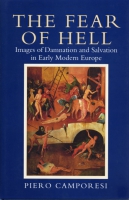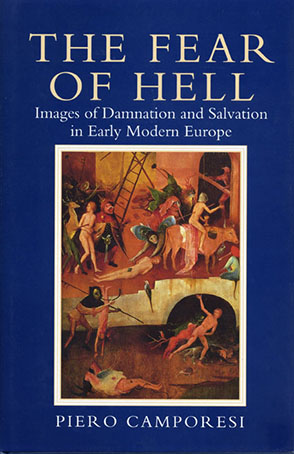The Fear of Hell
Images of Damnation and Salvation in Early Modern Europe
Piero Camporesi
“This is an immensely stimulating work, vivid, full of ideas, offering suggestions that go well beyond its stricter subject matter. All scholars and students concerned with the ways the psyche has been shaped by the material doctrines of Christianity will want to read this book.”
- Description
- Reviews
- Bio
- Subjects
In the first part of the book, Camporesi argues that hell was a very real part of everyday life during the sixteenth and seventeenth centuries. Preachers portrayed hell in images typical of common experience, comparing it to a great city, a hospital, a prison, a natural disaster, a rioting mob, or a feuding family. The horror lay in the extremes to which these familiar images could be taken. The city of hell was not an ordinary city, but a filthy, stinking, and overcrowded place, an underworld "sewer" overflowing with the refuse of decaying flesh and excrement—shocking but not beyond human imagination.
What was most disturbing about this grotesque imagery was the realization by the people of the day that the punishment of afterlife was an extension of their daily experience in a fallen world. Thus, according to Camporesi, the fear of hell had many manifestations over the centuries, aided by such powerful promoters as Gregory the Great and Dante, but ironically it was during the Counter-Reformation that hell's tie with the physical world became irrevocable, making its secularization during the Enlightenment ultimately easier. The eucharist, or host, the subject of the second part of the book, represented corporeal salvation for early modern Christians and was therefore closely linked with the imagery of hell, the place of perpetual corporeal destruction. As the bread of life, the host possessed many miraculous powers of healing and sustenance, which made it precious to those in need. In fact, it was seen to be so precious to some that Camporesi suggests that there was a "clandestine consumption of the sacred unleavened bread, a network of dealers and sellers" and a "market of consumers." But to those who ate the host unworthily was the prospect of swift retribution. One wicked priest continued to celebrate the mass despite his sin, and as a result, "his tongue and half of his face became rotten, thus demonstrating, unwillingly, by the stench of his decaying face, how much the pestiferous smell of his contaminated heart was abominable to God." When received properly, however, the host was a source of health and life both in this world and in the world to come.
Written with style and imagination, The Fear of Hell offers a vivid and scholarly examination of themes central to Christian culture, whose influence can still be found in our beliefs and customs today.
“This is an immensely stimulating work, vivid, full of ideas, offering suggestions that go well beyond its stricter subject matter. All scholars and students concerned with the ways the psyche has been shaped by the material doctrines of Christianity will want to read this book.”
Piero Camporesi is Professor of Italian Literature at the University of Bologna and author of Bread of Dreams: Food and Fantasy in Early Modern Europe (1989).
Mailing List
Subscribe to our mailing list and be notified about new titles, journals and catalogs.




